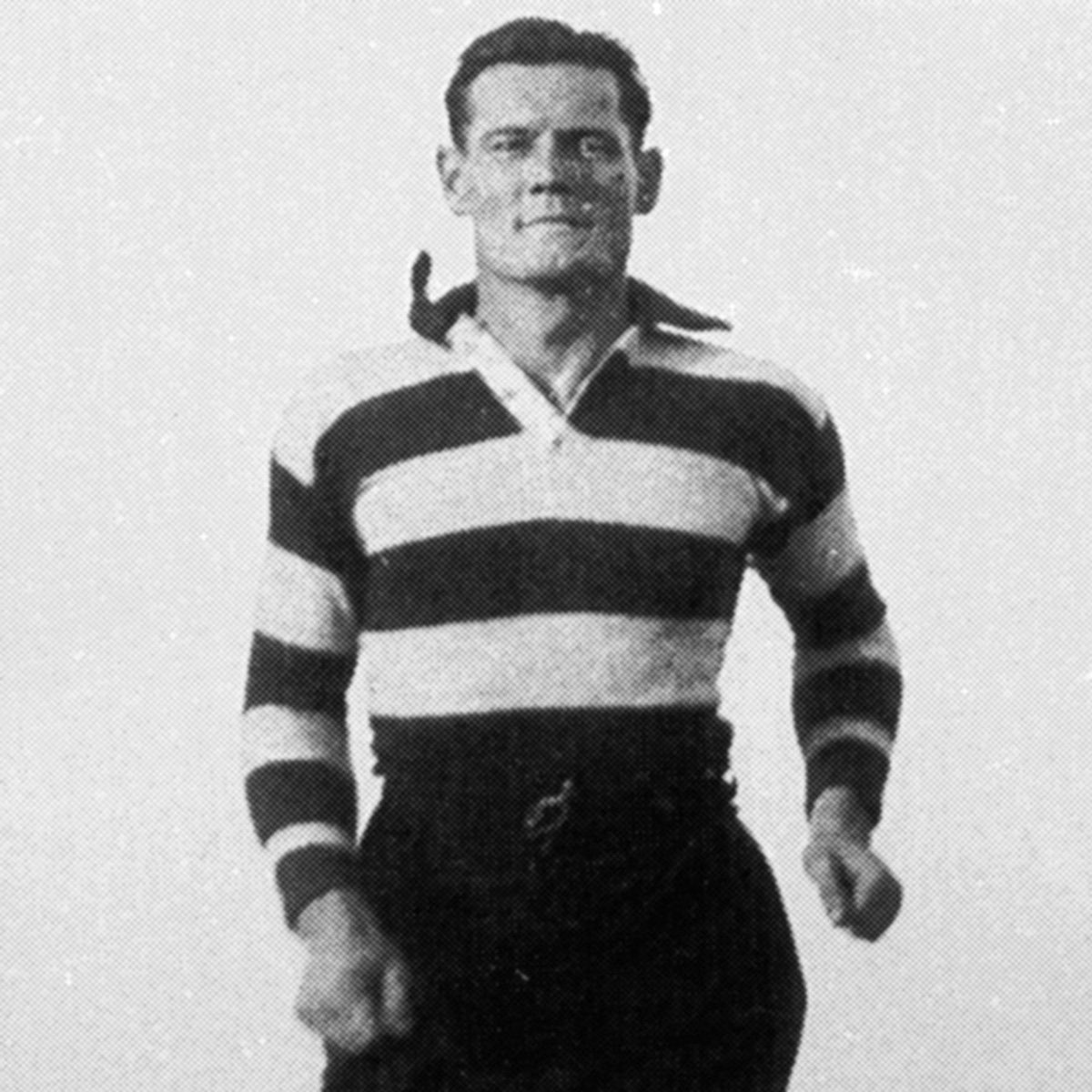Born Fremantle WA
7 August 1909 – 3 January 1983
The unique football talents of George Moloney were displayed in two facets in two States.
In one era he was a great goal-kicker and in another era he was a superb centre-man – a strange football contrast.
Molony was a promising junior with Claremont and three-quarters of the way through the 1927 season, as an 18-year-old, he was called up to the senior Claremont-Cottesloe side as a half-forward, staying in League ranks until 1931 when he moved to Geelong.
He made an immediate impact in the VFL, kicking seven goals in his debut match against Collingwood and 12 goals a week later against St Kilda. A Premiership came that year, with Moloney kicking 74 goals. In five years with Geelong, he kicked 303 goals in 88 games. He was runner-up to the legendary Haydn Buntonsen, for the 1932 Brownlow Medal – a rare feat for a full-forward. In that season he topped the VFL goalkicking ladder with 109 goals and when he repeated that century effort in WA in 1940 for Claremont, he became the only footballer to kick 100 goals in two major football States. That feat remained unchallenged until 1985 when Simon Beasley kicked 105 goals for Footscray after kicking 119 for Swan Districts in 1981.
On his return to Claremont in 1936, Moloney featured in five consecutive grand finals, losing the first two and winning the next three. His first year back saw him achieve another outstanding feat, winning the Sandover Medal for WA’s fairest and best player – but as a centre-man.
Moloney was not tall by full-forward standards (174cm or 5ft 8in), but he possessed amazing strength and agility. He had an uncanny ability to read the play and often snapped brilliant goals from behind packs or in tight pockets.
Moloney represented Victoria (against NSW in 1932) and WA playing mainly as a half-forward.
He was also a first-grade cricketer, a handy batsman with Claremont and a brilliant fieldsman, often described as one of the best slips catches in the game.
On his retirement from football in 1941, he had played 190 matches with Claremont and 88 with Geelong for a career total of 278.

